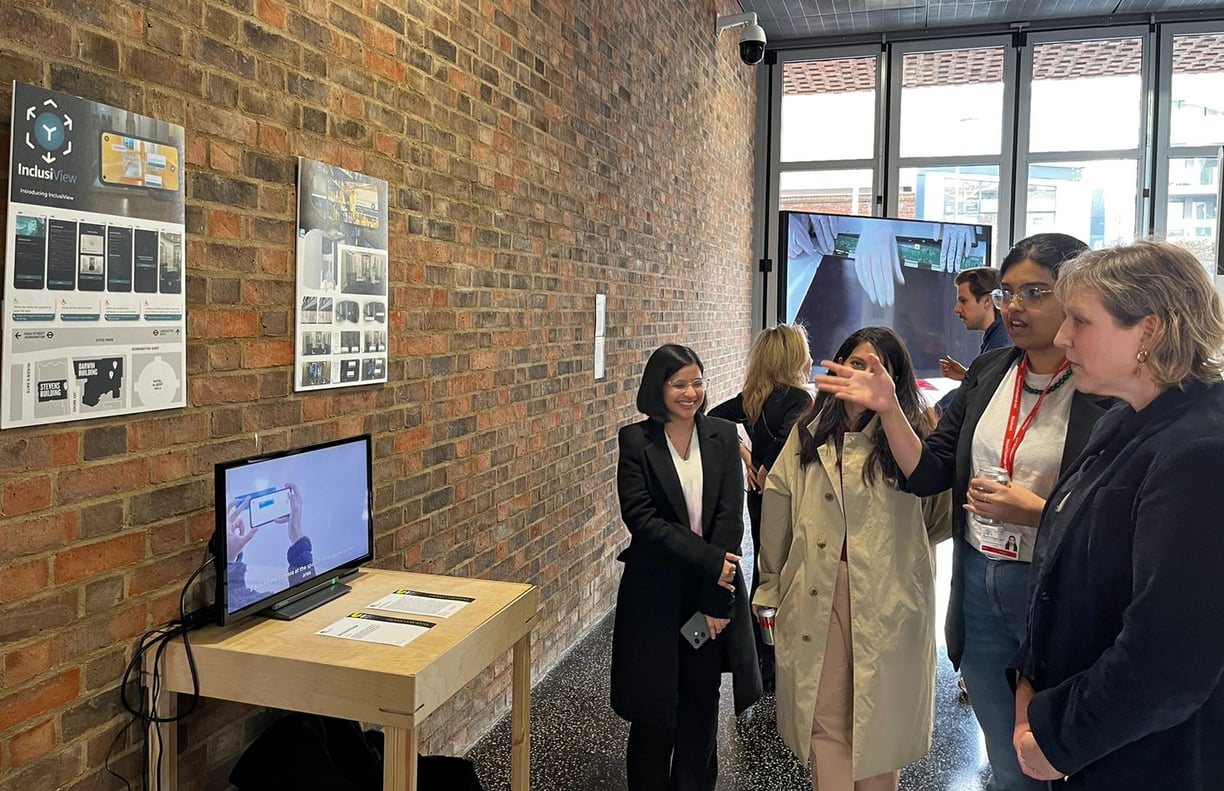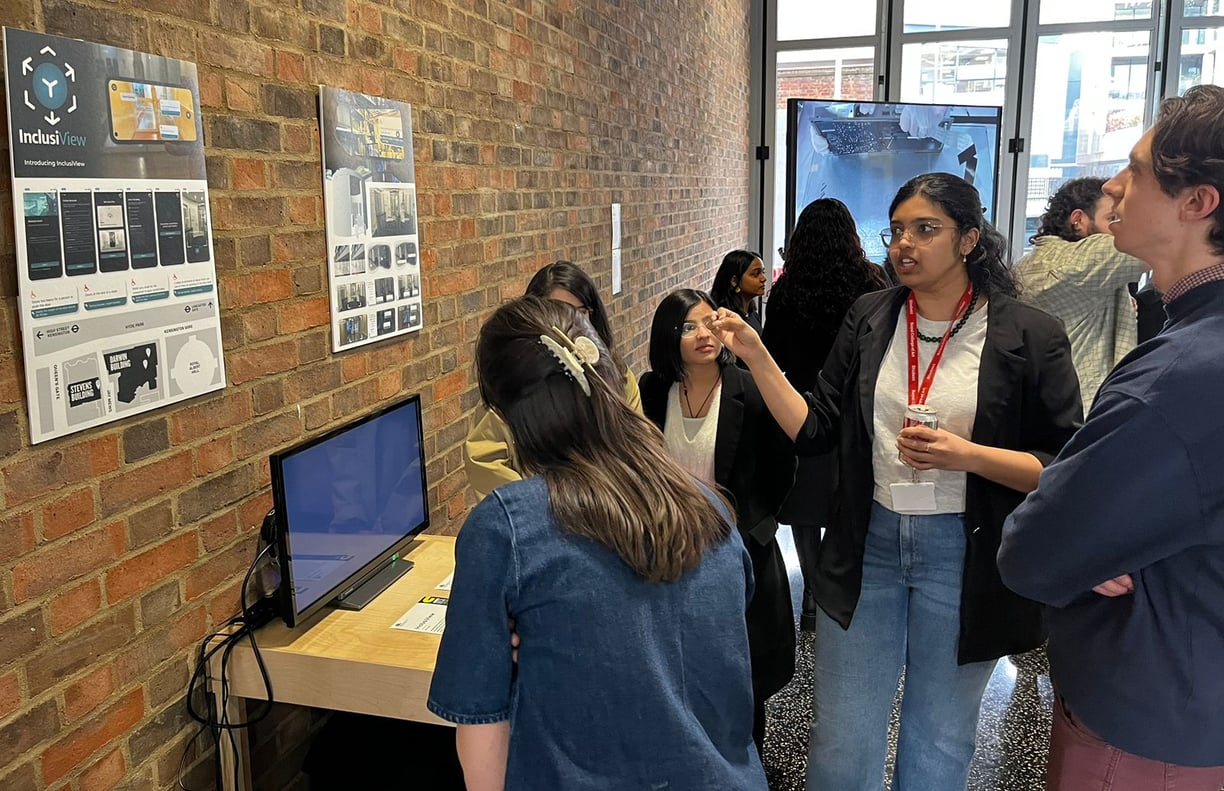InclusiView is a tool that aids Construction surveyors, Space planners & Architects highlighting existing accessibility issues in built environment as well as warns future risks by analyzing the designed floor plan and visualizing it real-time in Augmented Reality.
InclusiView
Selected as 1 of Top 20 out of 460+ projects for a Private Exhibition organized by the Royal College of Art London, celebrating the most diverse and innovative outcomes.
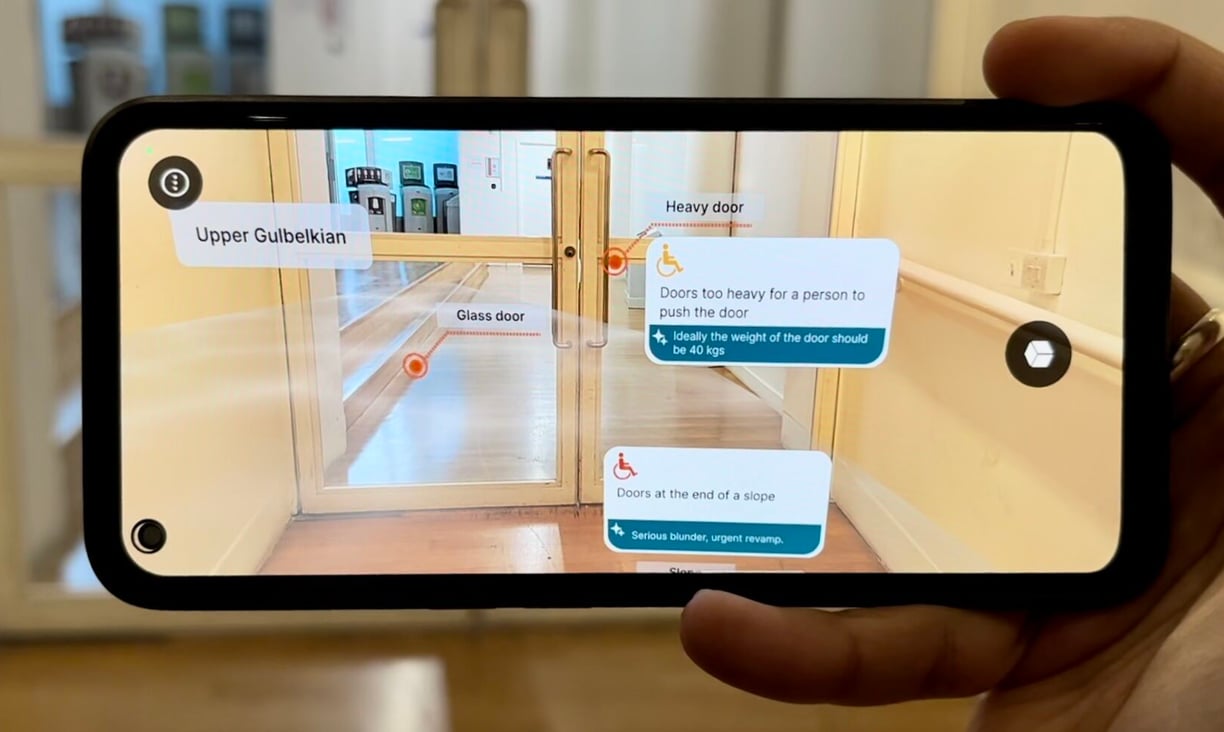

It was a multi-disciplinary team project with 4 other team members from Interior Design, Service Design and Information Experience Design.
The Process
Research
The issue
Desk research
Existing solutions
Market insights
Integration
User persona
User journey
Information
architecture
Crafting
High-fidelity
User interface
AR inputs
Prototyping
AR development
Interface integration
Next steps
User testing
AcrossRCA Exhibition
1
2
3
4
5
Timeline
14/12/23 - 05/03/2024
Domain
Augmented Reality
User Experience Design
User Interface Design
AR Development
Disability paramaters
Construction planning
The project was a team work guided by Royal College of Art London's Tutor Gareth Polmeer.
Responsibilities
Initial Research
AR Development
Prototyping
User Testing
Visual Interaction
Tools
Adobe Creative Suite
Unity
Figma
Blender
Miro
We leveraged AR/MR technology to enable building planners to experience physical and mental barriers from the early planning stages, addressing impairments of both body and mind.
Disability, being digital & better tomorrow


Upload area plan
Warnings/alternatives

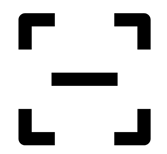

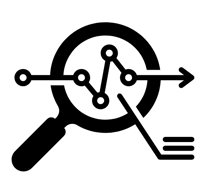

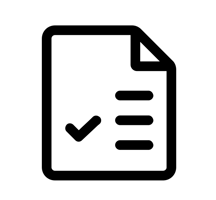
Scan the space
OR
Analysing
=
+
+
The research had substantial importance because our initial direction was towards accessibility standards under construction plannings and using Augmented Reality help disabled people experience it. But as we went ahead with the research, discussions with our tutors engaged more towards the signifying the planning part itself.
By using AR goggles, planners can walk through buildings undergoing renovation, allowing them to identify and address potential accessibility issues effectively. This proactive approach ensured an inclusive accommodating design process to be implemented in further AR applications.
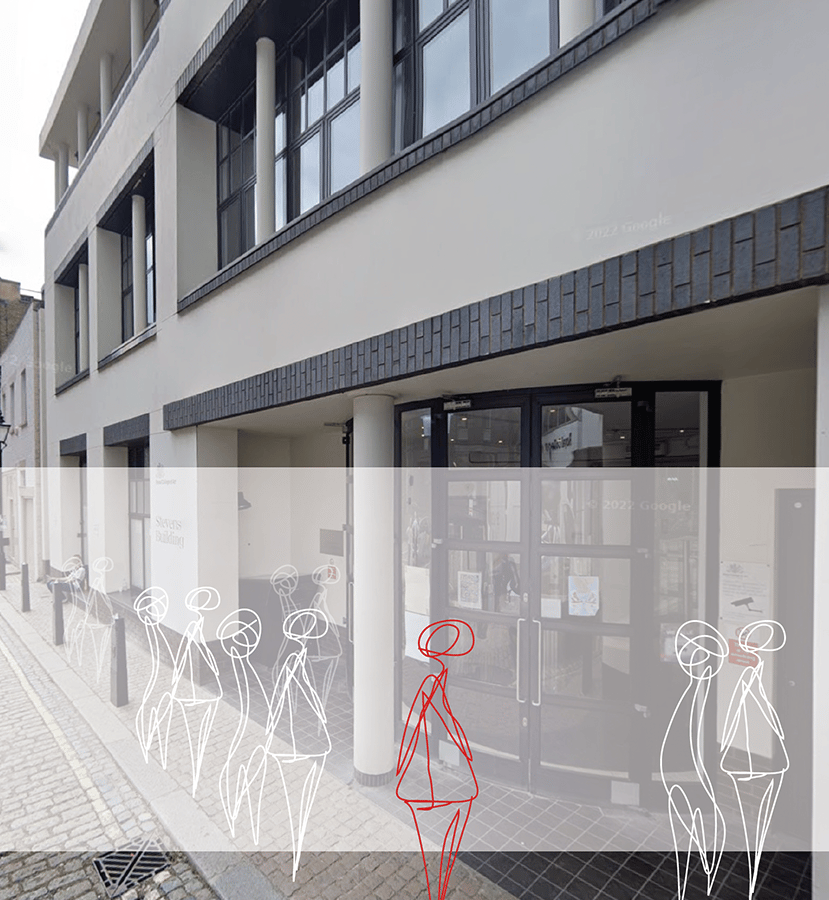

There are already devices that help people with disabilities navigate buildings. Instead of just helping disabled people experience a space through VR, we should use technology to design spaces that are accessible from the start. This way, we prevent accessibility issues before they happen.
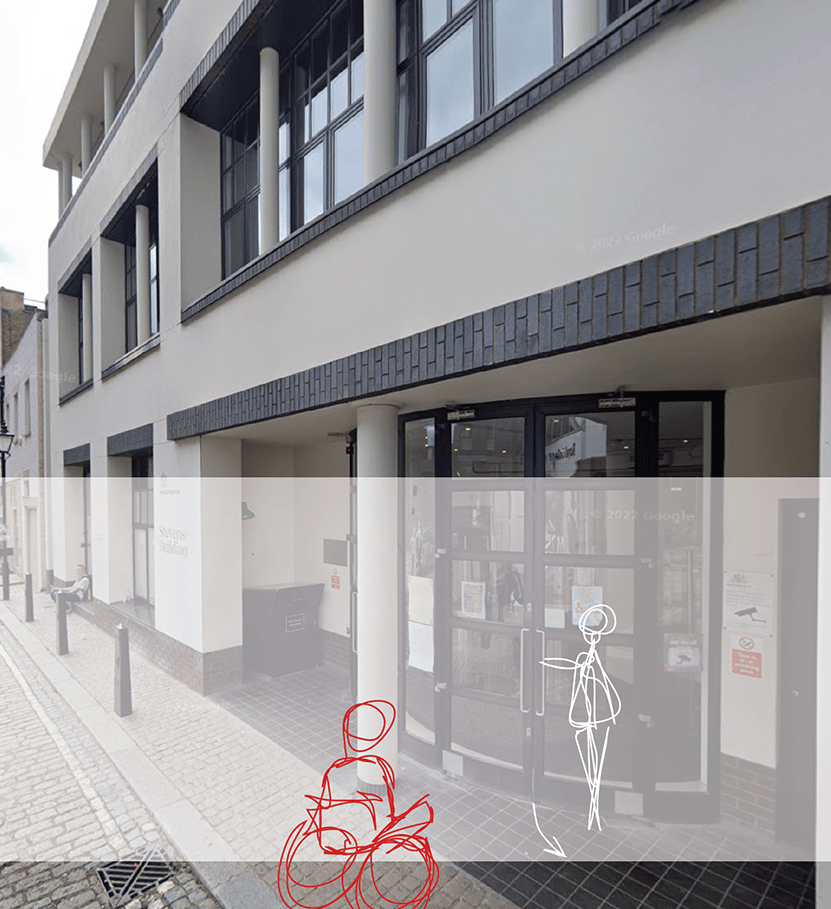

First we had to distinguish different phobias and fears associated that we related to our field. The most prominent that we across in desk research were Enochlophobia and Physical disability.
Enochlophobia is an irrational fear of crowds. A person with this phobia experiences high levels of anxiety when they're in a crowd or just thinking about being in a crowd. Many people with enochlophobia do their best to avoid crowds in any situation.
Physical disability is defined as a "limitation on a person's physical functioning, mobility, dexterity or stamina" that has a 'substantial' and 'long-term' negative effect on an individual's ability to do normal daily activities.
Quantitative Data
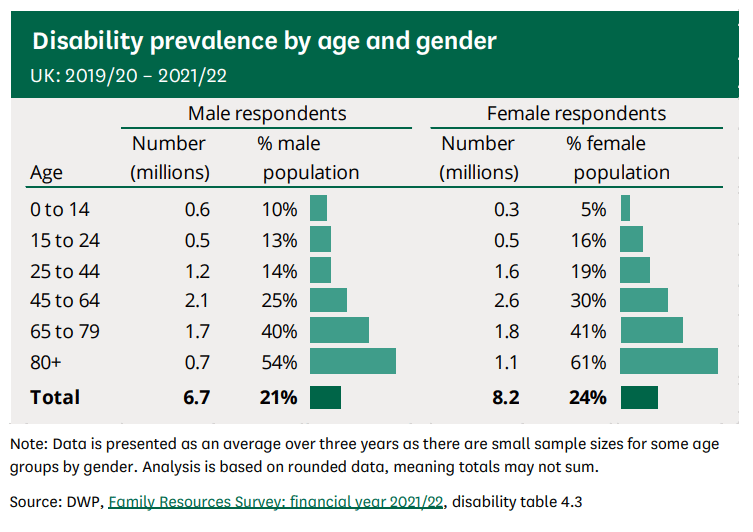

An estimated 16.0 million people in the UK had a disability in 2021/22.
This represents 24% of the total population.
The prevalence of disability rises with age: around 11% of children were disabled, compared with 23 % of working age adults and 4 5 % of adults over state pension age.
Mobility is the most frequently reported impairment type (47%),followed by stamina, breathing or fatigue (35%), and mental health(32%).
As of February 2023, there were 6.3 million people claiming an extra-cost disability benefit in great britian, representing 9.6% of the total population.
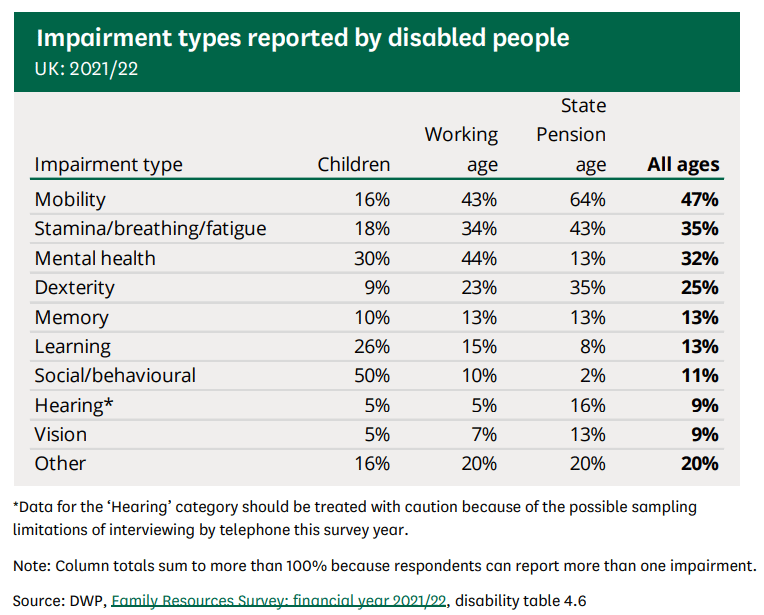

According to the ons labour force survey, 9.6 million people of working age (16 to 64) reported that they were disabled in January to March 2023, representing 23% of the working-age population.
This is an increase of 600,000 people from the year before. 23 in the same period, an estimated 5.1 million disabled people were in employment.
This works out as an employment rate of 53.7%, up from 51.7% in 2019.
Universal Design Guide
For prompts on getting better insights, we used guides from Universal Design Guide website which had many different exercises. Aishwarya, Mugdha and Srinija conducted interviews with many of our potential end users. The insights were then implemented into final designs.
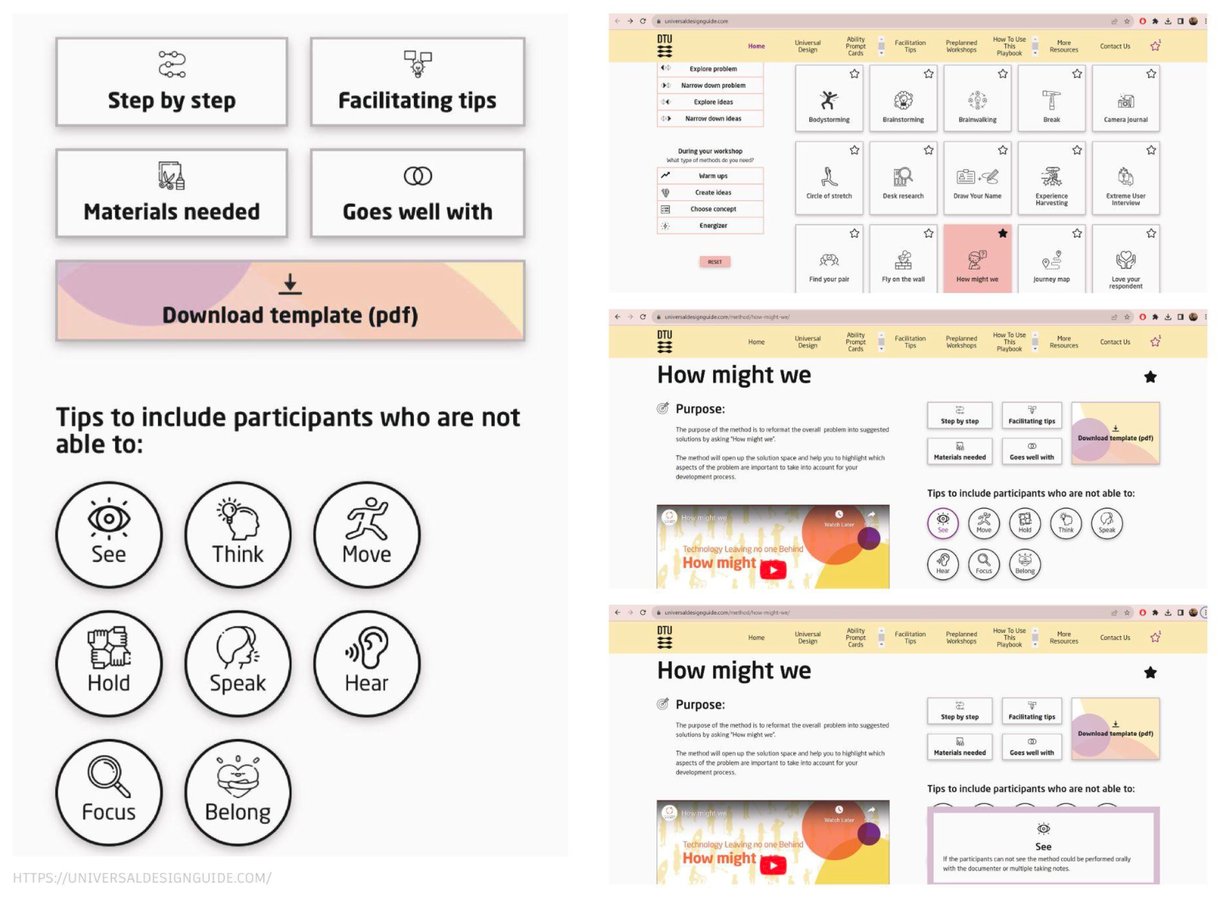

User Persona
User Journey
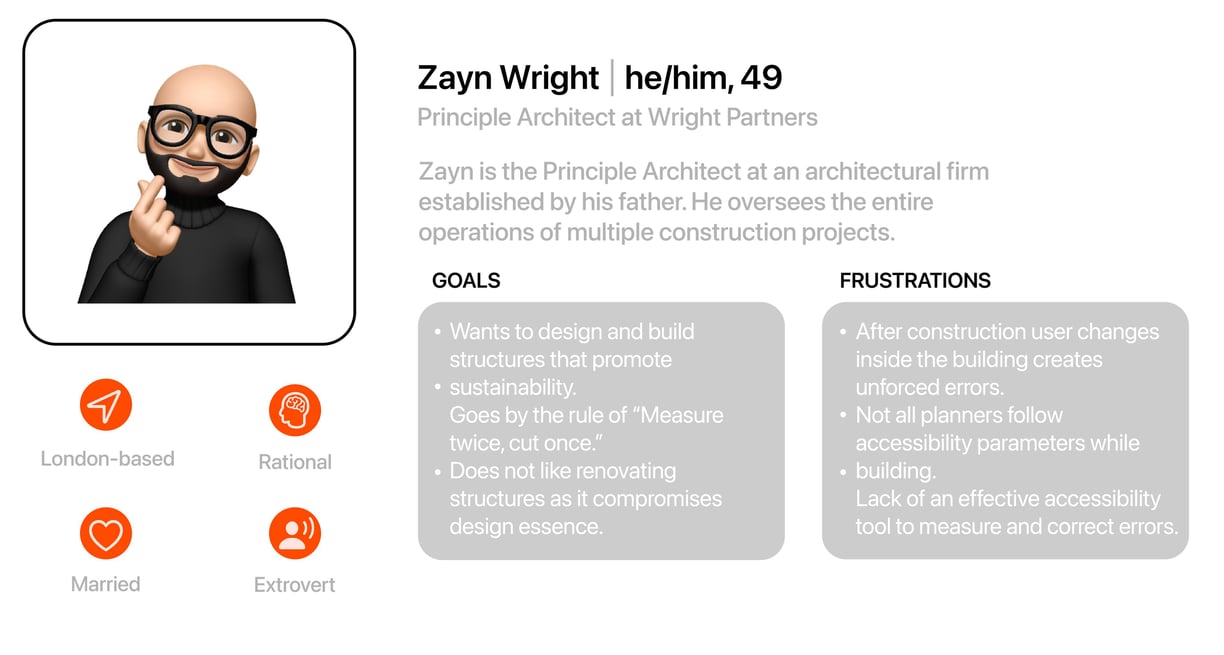

Envisioning an Architect in his prime career goes through his life redefining goals, frustrations and needs for various tools to be developed in the market. We tried to include a wider user base so that we could cater to their generic problems in a specified way.
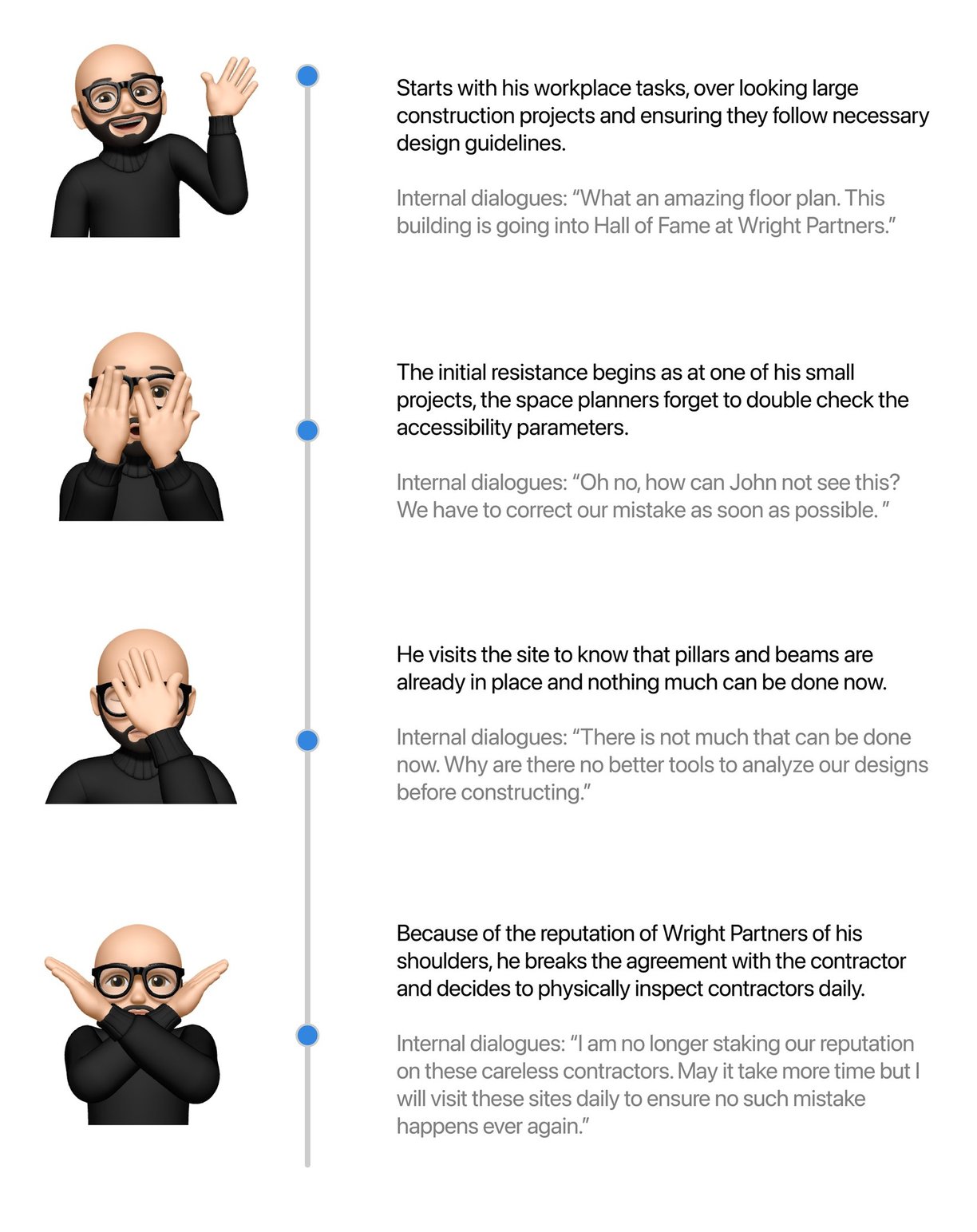

This user journey explains how certain problems arise due to the lack of certain tools and how big they could escalate. People generally do not realize how important the tool is until a mistake has been made. This advocates for our project direction and end goal to be viable solution.
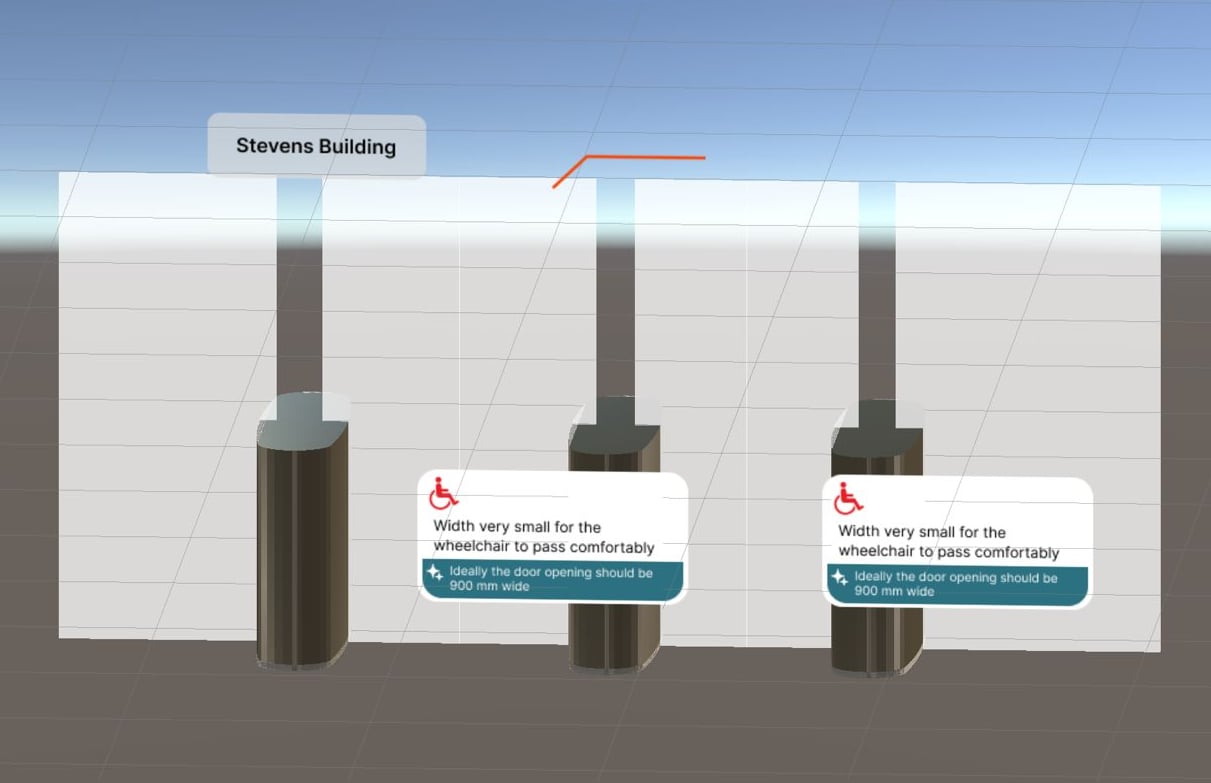

One of the entrances of Stevens building was 3d modelled and added into unity to test AR accessiblity parametrs. The width of the entrance was narrow and had other issues as well that were highlighted.


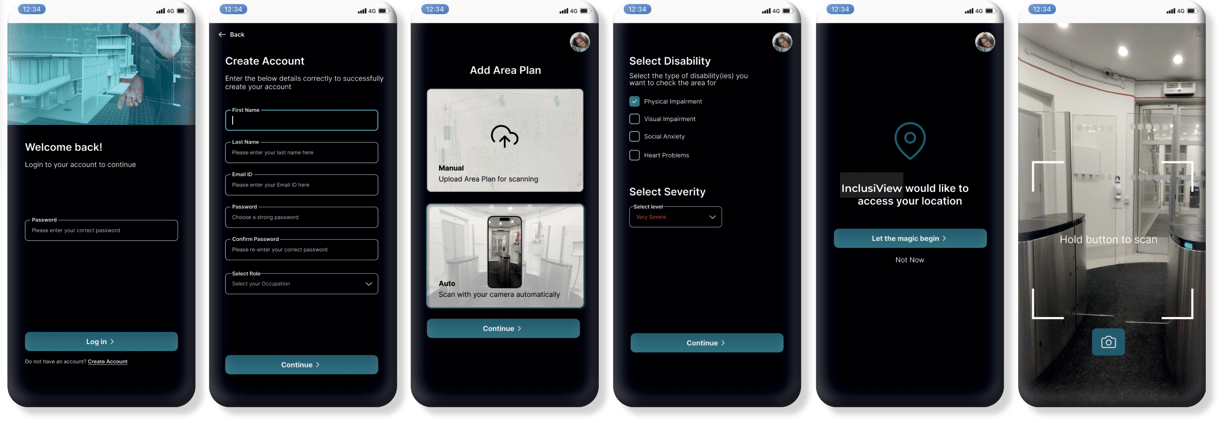

Our final direction emerged "there are already devices that help people with disabilities navigate buildings. Instead of just helping disabled people experience a space through VR, we should use technology to design spaces that are accessible from the start. This way, we prevent accessibility issues before they happen."
The userflow of the application was designed to be straight-forward with having options to upload an area plan manually or auto scan the environment to analyse and identify issues.
User setup
Mapping streets and navigation
Aishwarya, Mugdha and Srinija made the user interface and setup screens as they had a fair background of accessiblity design principles and interface design.
Emily gave her input on the architectuural/interior side of the project and I developed and designed the tool in Augmented Reality for prototyping and exhibition.
And as first step into that, we chose our RCA's Kensington building as our construction site. Even though the building was already developed, we used market available 3d scanners to portray it as in the construction phase and then used its 3d model for our project.


The screens show the user journey visualization of the platform suggesting problems in existing spaces and the severity of the selected disability.
User case scenario
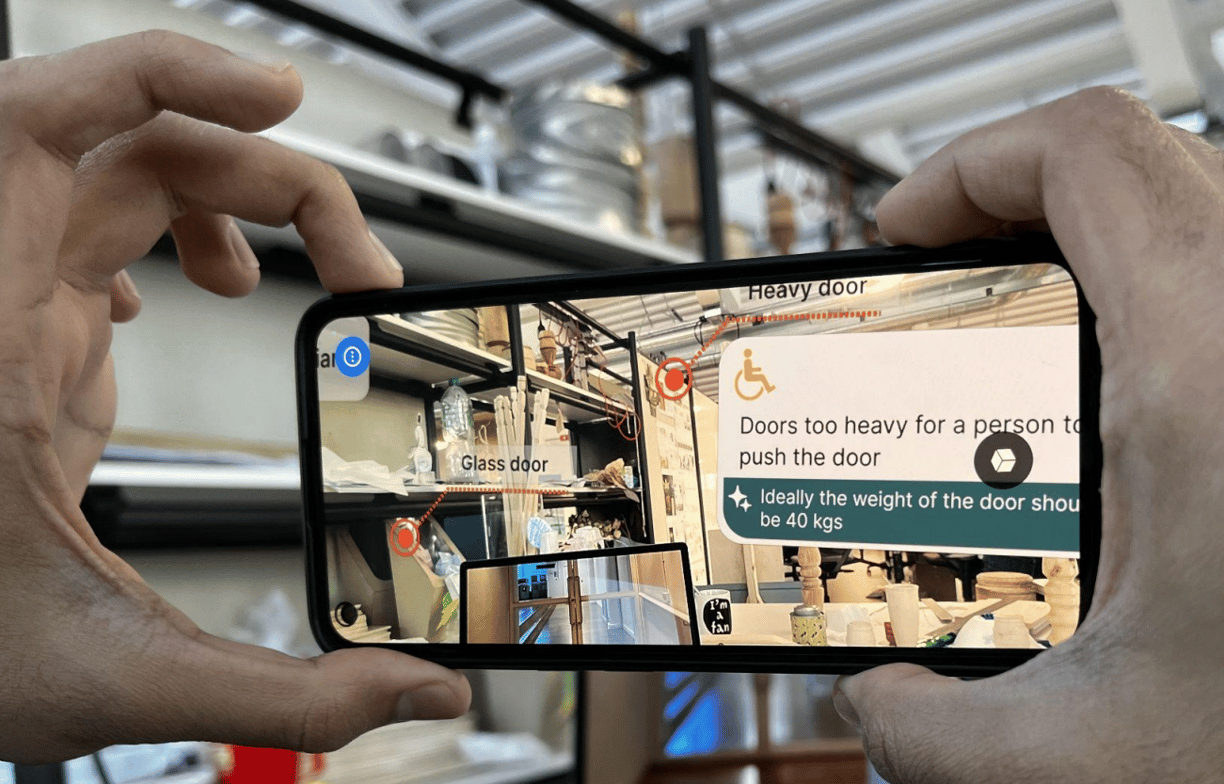

The Inclusiview platform was prototyped in Augmented Reality using Unity software and building apk files to load on android devices. By doing so, we prototyped the platform and got insights on which parts needed further improvements.
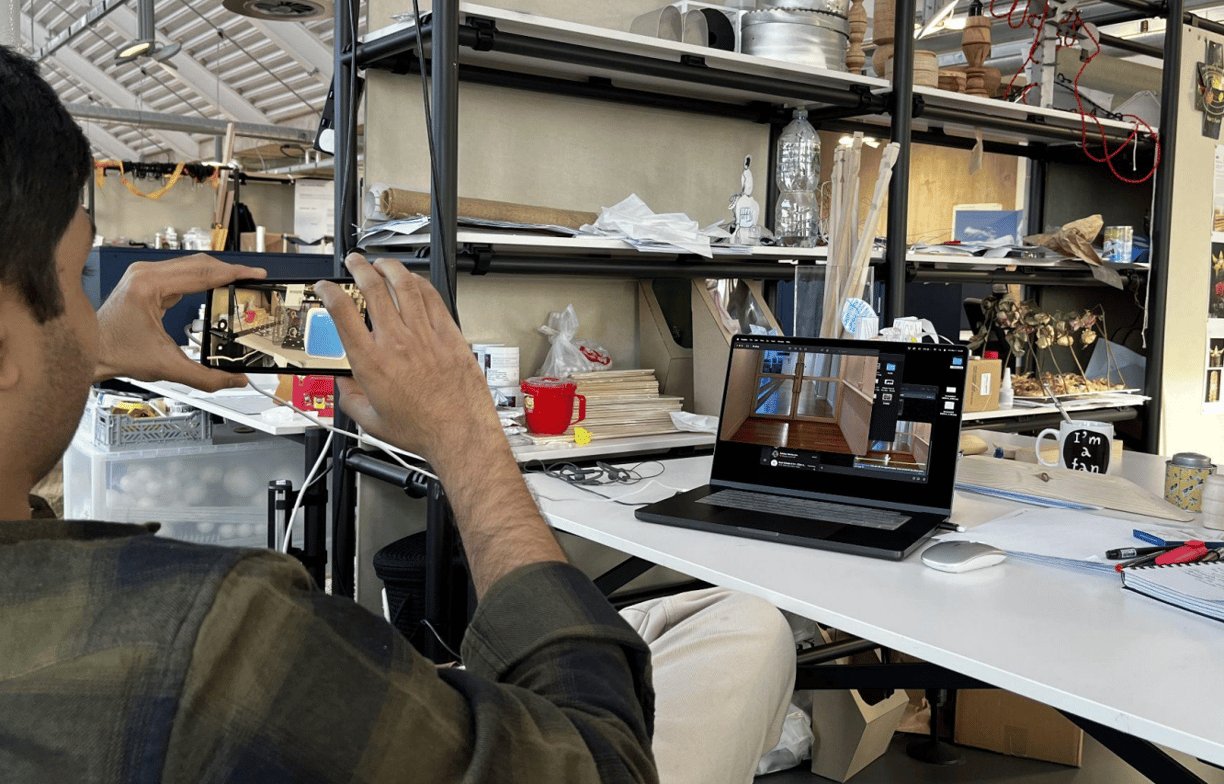

Additionally, due to the exhibition nomination, we also got expert advice on our design decisions and journey. We incorporated the changes and developed further so that space planners, architects and interior designers can test their designs.
Prototyping AR in Unity & user testing
The challenging task was to make the tool realize a certain space, scan the 3d enviornment or the upload plan and place the errors in the right angle so that they do not block user navigation.
Please watch our final video on the link.


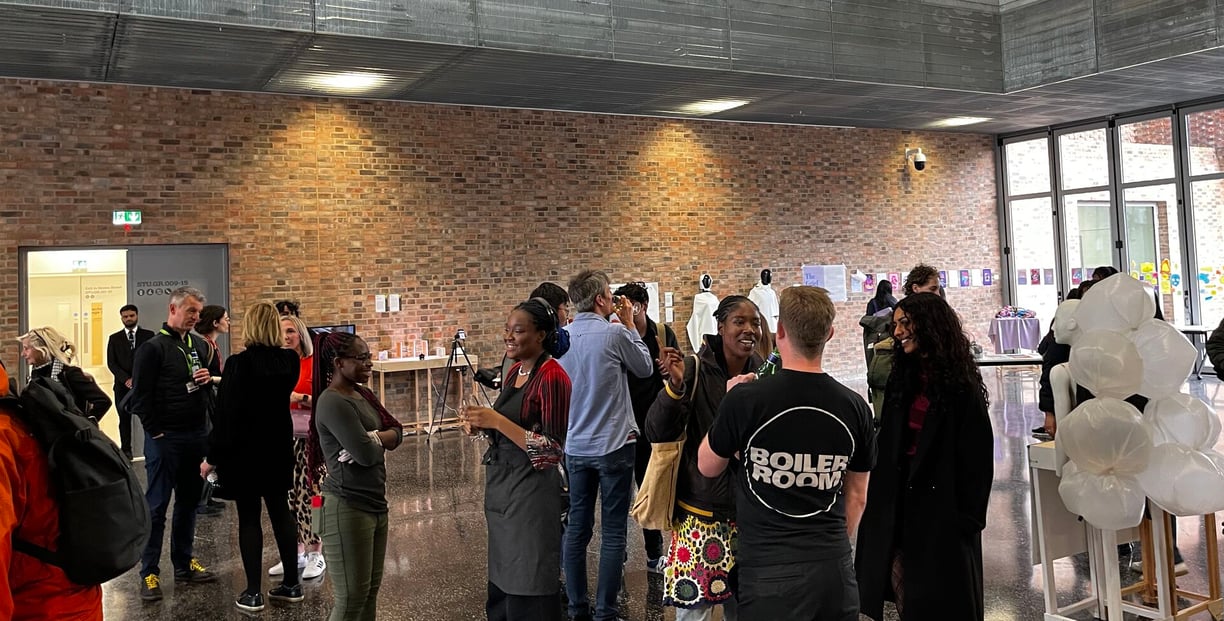

Selected as 1 of Top 20 out of 460+ projects for private exhibition organised by the Royal College of Art London, celebrating the most diverse and innovative outcomes.
Celebratory Exhibition
Private viewing exhibition images with 20 projects displayed in the Hangar Space, RCA Battersea London.
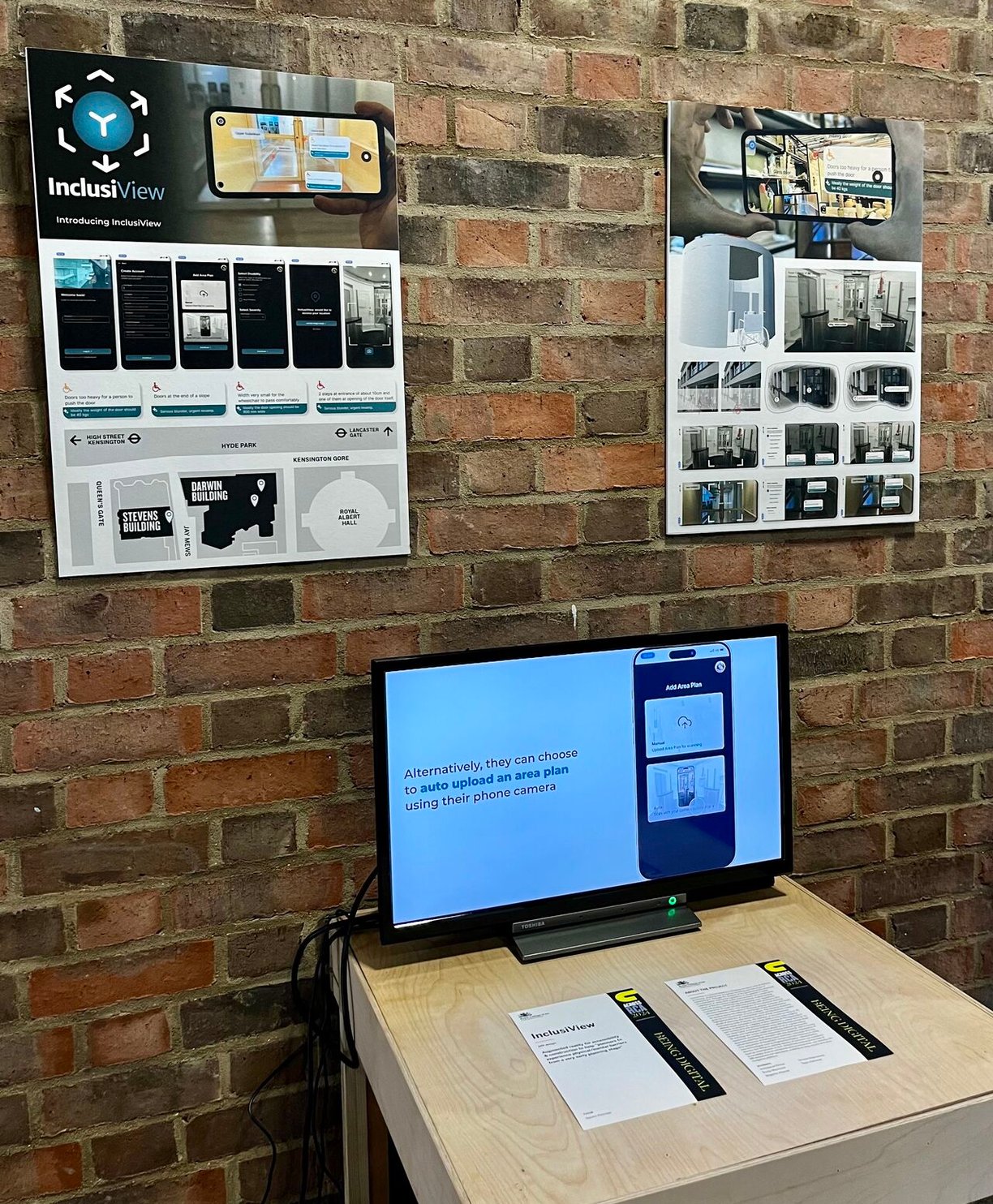

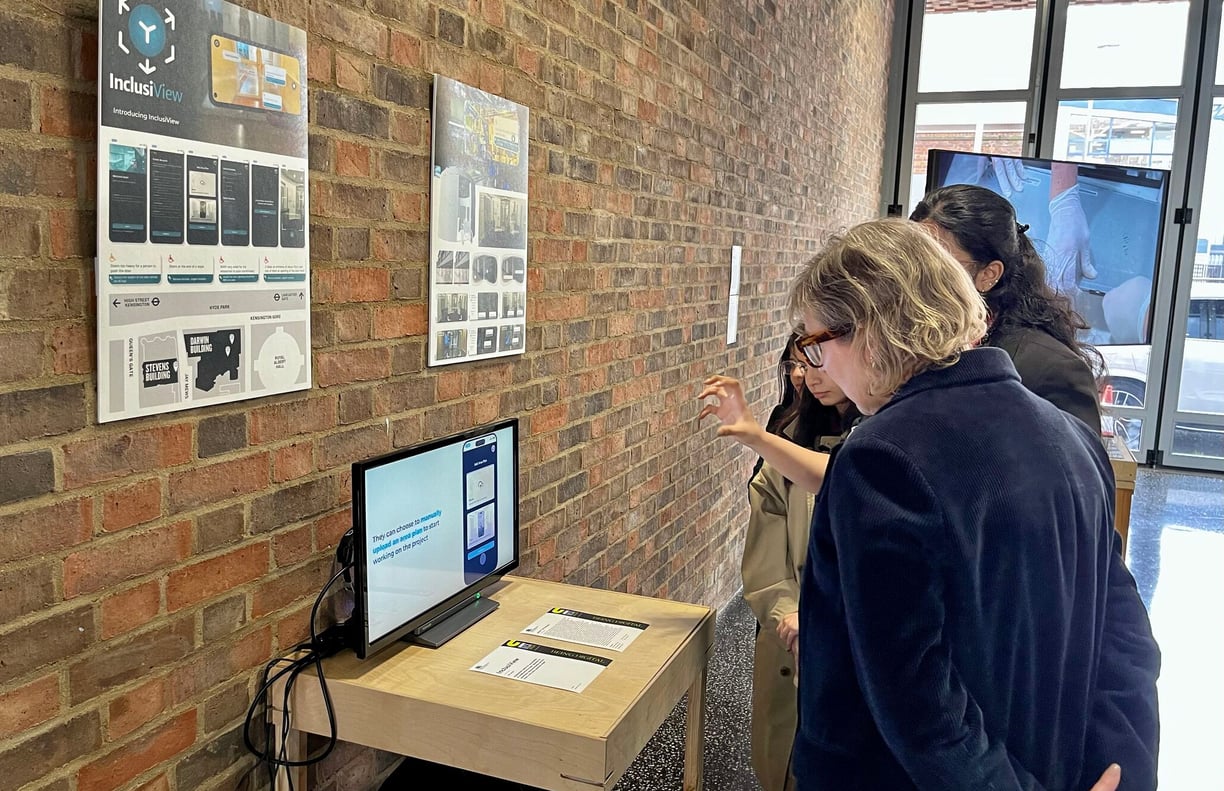

With Royal College of Art School of Communication Dean Kerry Curtis.
Team:
Aishwarya Bhave (MA Service Design)
Mugdha Attarde (MA Service Design)
Emily Marzocchi (MA Interior Design)
Srinija Ghantsala (MA Information Experience Design) and
Myself Tejas Gaikwad (MA Design Products)
